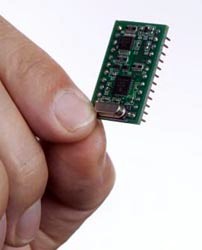Computer scientists at North Carolina State University in Raleigh have developed a new technology for encrypting data in non-volatile main memory found increasingly in new computer systems and devices. The team will discuss their findings next month at the International Symposium on Computer Architecture in San Jose, California.
Non-volatile main memory (NVMM) allows computers to start instantly and can fit more memory into the same amount of space than current devices by holding data in the main memory after the computer — or smartphone or tablet — is turned off. Today’s conventional dynamic random access memory (DRAM) loses the data when the system is turned off, thus requiring the data to reload when the overall system is turned back on.
Data stored in NVMM, however, can be accessed if the device is stolen. And data in NVMM cannot be encrypted with software, since software is also stored in main memory and thus cannot manage main memory functions.
The NC State computer scientists, led by engineering professor Yan Solihin, developed a hardware method they call i-NVMM to solve this problem. The heart of the solution is an algorithm that detects the data needed by the processor — about 78 percent of main memory — which i-NVMM keeps in main memory and encrypts. Keeping only the data needed for the processor maintains performance levels of the overall device, which would otherwise slow to a crawl if all of the data were encrypted.
The remaining data in main memory are encrypted when the overall system is powered down. Likewise, i-NVMM detects idleness and encrypts data not currently in use, which makes i-NVMM more secure than DRAM.
i-NVMM uses a self-contained encryption engine incorporated into a computer’s memory module, which does not require changes to the computer’s processors. Thus, i-NVMM can be used with different processors and on different systems. “We’re now seeking industry partners who are interested in this technology,” says Solihin.
Read more: Engineers Increase Computer Program Speed, Retain Safety
* * *


 RSS - Posts
RSS - Posts
You must be logged in to post a comment.